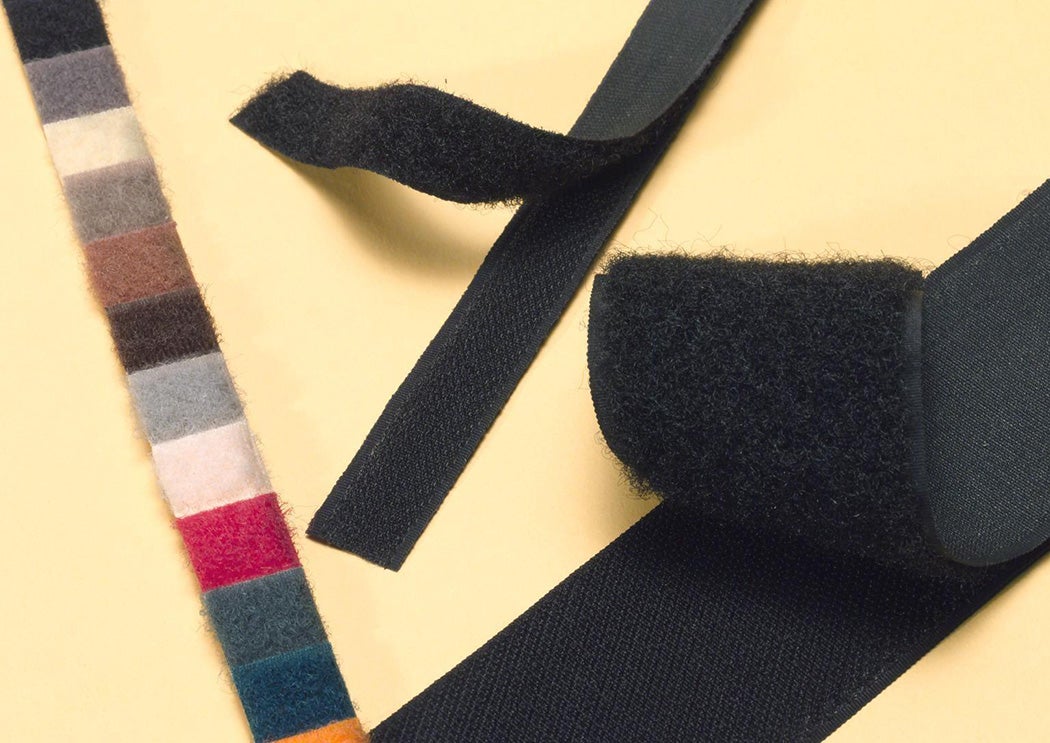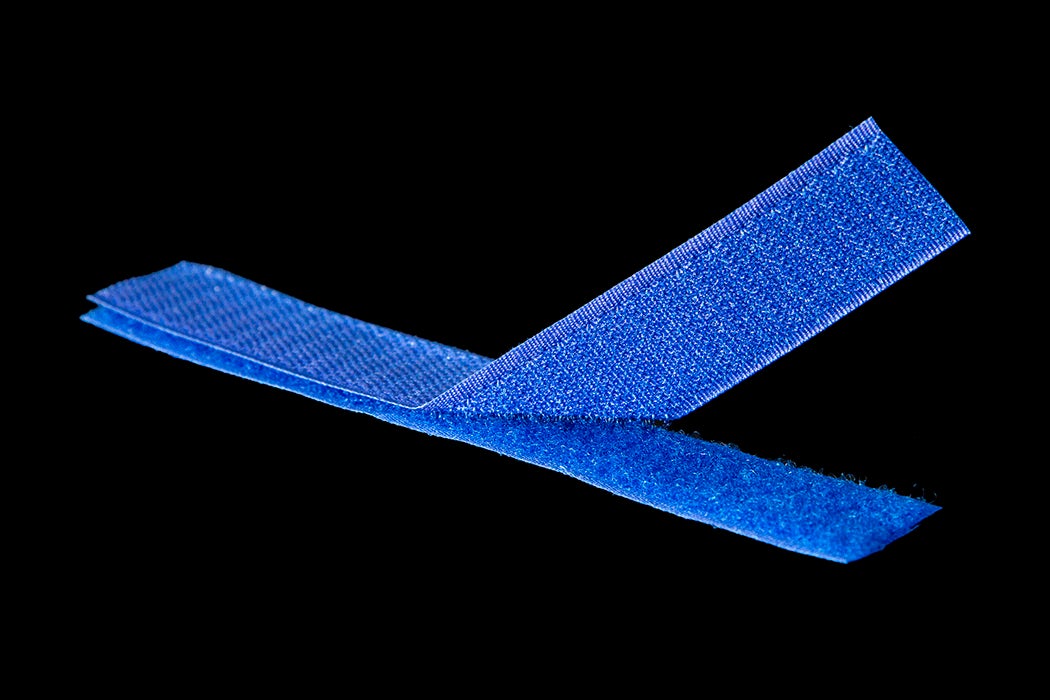There’s a good chance you’ve used Velcro today—to fasten a shoe, or close a sports bag, or strap together all those computer cables under your desk. We’re all familiar with its scratchy textured hooks snagging onto the soft furry side (or snagging your clothing if you’re not careful) and making that satisfying rrrrppp when pulled apart. It’s classified as “hook-and-loop” fastening, and Velcro is the brand name, though it’s become a generic trademark, much like “Scotch tape,” “Xerox,” and “Kleenex.” But the grippiness of the hooks was inspired by nature (a process known as “biomimesis,” where natural processes are copied artificially).
As Martin I. Jacobs explains in Scientific American, Swiss inventor George de Mestral came up with the idea for Velcro in the early 1940s after pulling burrs from his dog (or possibly from his trouser legs, as another version of the story has it). Under a microscope, the burrs show hundreds of tiny hooks, perfect for snagging a passing animal’s fur (or a passing human’s clothing), helping to distribute the plant’s seed anywhere the carrier goes.

“A prickly fruit thus became the inspiration for the nylon hooks and loops that have been used since the 1950s as universal fasteners for everything from disposable diapers to armor for troop carriers,” writes Jacobs.
By replicating the burr in hook-and-loop fasteners, de Mestral created a product with a grip strength so great it can support the weight of a 175-pound person with just a two-inch square. That two-inch square could have some 3,000 hooks and loops, and only one-third of them need be engaged to accomplish this heavy-lifting task.
Weekly Newsletter
“Hooks do detach with less force when pulled at an oblique angle,” Jacobs explains, as diagonal tugging acts against a single row rather than the entire square of hooks.
Velcro hit the market in the 1950s, and its versatility has seen it used everywhere from ski jackets to spacecraft. Strips of it can be sewn to fabric, and it also comes in small adhesive circles to put on other surfaces.
For science teachers, Velcro can be part of lessons on creating fasteners or seed dispersal. For the rest of us, it’s an object lesson in creativity and the genius of nature.







